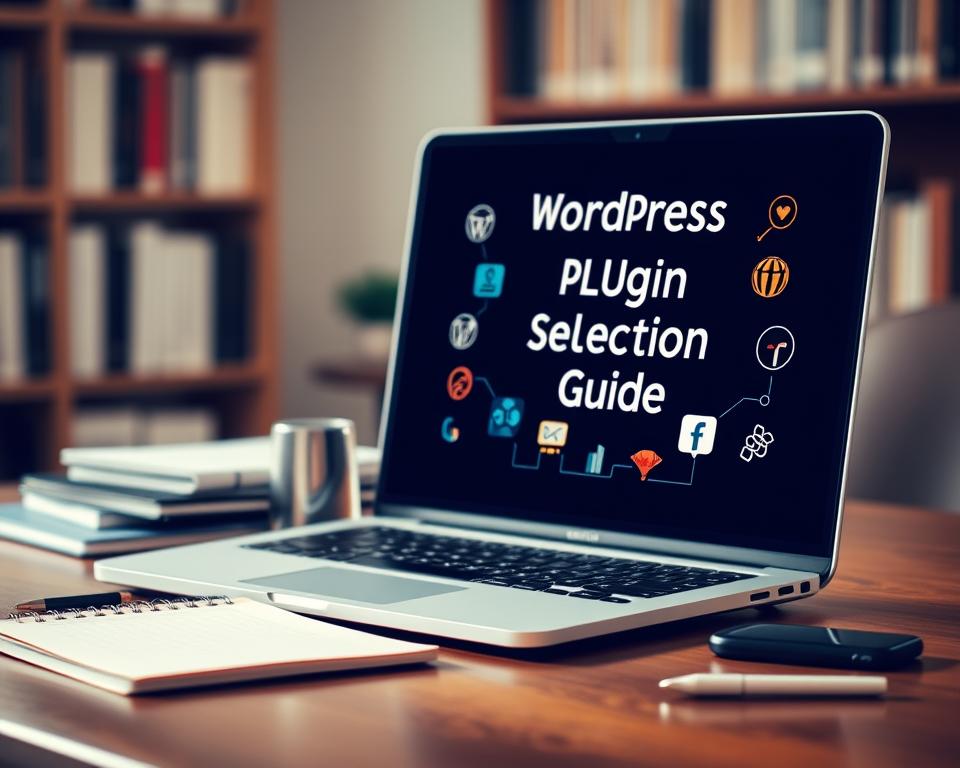Dominate SEO on WordPress: Quick Handbook
You may not realize it, but Seventy-eight percent of firms built on WordPress experience better search-engine rankings after deploying strategic SEO initiatives. WordPress SEO tuning has grown into a crucial pillar for digital success. It turns websites from obscure to magnetic for search engines.
WordPress supplies a versatile foundation for webmasters looking to raise their web presence. With native features and flexible SEO tools, WordPress SEO solutions can assist businesses move up results pages rapidly. SEO Marketing Nerds suggest harnessing these built-in functions to create a resilient digital profile.
This guide will take you through the most effective SEO on WordPress, unveiling pro tactics that turn your website into a traffic magnet. Whether you’re a consultant specializing in WordPress SEO or a site owner, these methods will help you unlock your site’s full potential using local SEO WordPress.
From learning foundational optimization methods to deploying sophisticated tactics, this guide supplies hands-on insights to improve your WordPress website’s search performance. Get ready to dive deep into the universe of WordPress SEO and see your online visibility rise.
Getting to Know WordPress SEO Fundamentals
WordPress and SEO are in seamless sync, enhancing your site’s exposure in search results. As a versatile content management system, WordPress creates a steady foundation for SEO strategies.
Grasping WordPress SEO essentials can radically change your site’s web stance. It delivers distinct perks for SEO professionals and site owners alike:
- Semantic HTML markup
- Mobile-friendly design capabilities
- Simple content handling
- Comprehensive plugin marketplace for SEO improvements
Choosing WordPress.org over WordPress.com offers you full control for SEO fine-tuning. The host-your-own version enables for deeper customization, crucial for high-level SEO techniques.
WordPress’s SEO benefits are many:
- Adjustable permalink formats
- Rapid content publishing
- Straightforward metadata management
- Native features for search-engine indexing
To raise SEO on a WordPress site, it’s imperative to understand these fundamental components. Successful WordPress SEO requires a thoughtful blend of technical optimization and high-quality content.
Insider tip: A WordPress SEO expert always prioritizes user experience together with search-engine needs.
Essential WordPress SEO Settings
Setting up the right SEO options is crucial for any WordPress site. A well-configured WordPress SEO setup can greatly improve your site’s search-engine success and visibility. Professional WordPress SEO companies recommend a strategic approach to these essential configurations.

Consider the key settings that turn your WordPress site optimized for search:
- Configure Permalink Structure
- Use simple, keyword-rich URL formats
- Include focused keywords in permalinks
- Avoid lengthy, complex URL strings
- Generate XML Sitemap
- Provide a complete sitemap
- Submit to Google Search Console
- Ensure all critical pages are indexed
- Install SSL Certificate
- Switch to HTTPS for stronger security
- Strengthen WordPress Google SEO ranking signals
- Protect user data
A WordPress SEO advanced plugin can streamline these settings. During your WordPress SEO audit, concentrate on building a solid foundation that search engines will value. Focus on clean site architecture, speedy loading speeds, and clear content hierarchies.
Expert Hint: Ongoing optimization is essential to maintaining strong search-engine performance.
Remember, these WordPress SEO-friendly settings are your first step toward enhanced digital exposure and SERP positions.
Practical SEO Usage for WordPress
To boost your WordPress site’s exposure, a intentional approach is essential. Understanding how to implement SEO to WordPress can greatly improve your web footprint and draw more relevant visitors.
Multiple tactics can increase your site’s search-engine ranking. These include:
- Optimize title tags and meta descriptions
- Publish valuable content
- Leverage WordPress local SEO techniques
- Develop solid internal architecture
- Enhance image optimization
WordPress SEO best practices stress multiple critical aspects. High-quality content is still the most important factor in search-engine rankings. Your website should offer useful information that answers user queries.
For brick-and-mortar companies, targeting geographic-specific keywords is vital. This includes embedding location-based terms and producing content that speaks with your community.
Powerful SEO is about building a seamless user experience while indicating authority to search engines.
Back-end optimization is a pivotal component of your WordPress SEO framework. Make sure your website loads quickly, is mobile-optimized, and has a clean, logical structure. This makes it easier for search engines to understand your site.
Finding the Perfect WordPress SEO Tool
Selecting the ideal SEO plugin can dramatically enhance your WordPress website’s search results. Whether you’re a beginner or an advanced SEO practitioner, you need capable tools to optimize your site efficiently.
When assessing WordPress SEO plugins, look at these important factors:
- Intuitive interface for WordPress on-page SEO
- Comprehensive optimization features
- Instant content analysis capabilities
- XML sitemap generation
- Schema markup support
Top WordPress SEO plugins to try include:
- Yoast SEO: Powerful content optimization tool
- All in One SEO Pack: Extensive feature set
- Rank Math: Advanced configuration options
A WordPress SEO consultancy typically suggests plugins that simplify technical optimization while delivering detailed site analysis. Important factors include ease of use, performance overhead, and alignment with your specific SEO website WordPress goals.
Expert insight: Always sandbox plugins in a staging environment before full implementation.
Choose a plugin that fits your skill level and provides actionable guidance for improving your site’s search-engine rankings.
Improving On-Page SEO
Mastering on-page SEO is crucial for WordPress sites looking for better search-engine results. Fundamental SEO WordPress strategies can greatly boost your content’s visibility. This, in turn, attracts more search traffic to your site.
Key optimization techniques include:
- Creating compelling title tags with focus keywords
- Writing concise meta descriptions
- Structuring content with logical header tags
- Using clean URLs
When utilizing WordPress SEO assistance, it’s critical to create descriptive title tags. These should be between fifty to sixty characters long. Put your main keyword at the start and add your brand name at the end. These tips help search engines get your content’s context.
For best results, work on fine-tuning your content format. Use H1 tags for main titles, h2 for section headings, and h3 for subsections. This hierarchical approach improves both readability and SEO effectiveness.
URL optimization is another vital aspect of SEO optimisation WordPress. Guarantee your URLs are short, meaningful, and include relevant keywords. Skip complex structures that can puzzle users and search engines alike.
Remember: On-page SEO is about creating high-value, clear content that helps both users and search algorithms.
Optimizing Content for SEO
Developing effective content is the bedrock of WordPress search optimization. An effective WordPress SEO optimization service demands a strategic content approach that draws in both search engines and visitors.
Using WordPress long-tail keyword tactics involves several key steps:
- Carry out thorough keyword research to discover relevant search terms
- Create content that directly answers user questions
- Provide original, meaningful insights not found elsewhere
- Arrange content for readability
When tuning SEO on WordPress, prioritize creating excellent content that provides genuine value. Quality beats quantity without fail. Use long-tail keywords naturally within your text, so they fit seamlessly with the content.
To improve SEO WordPress results, employ these content approaches:
- Produce in-depth articles
- Frequently update current content
- Employ internal linking to connect related posts
- Stick to a regular publishing schedule
Strong content is the connection between your website and your readers’ needs.
By implementing these WordPress search optimization techniques, you’ll create compelling content that not only performs well but also provides tangible value to your readers.
Back-End SEO Strategies
Technical SEO is the core of a successful WordPress site optimization strategy. The proper technical elements can greatly enhance your website’s search-engine performance and user experience.
When establishing SEO for WordPress, several essential technical factors need attention. Site speed is a fundamental ranking factor that immediately affects search visibility. Google’s Core Web Vitals now evaluate websites based on load speed, interactivity, and visual stability.
- Improve site speed through caching mechanisms
- Minimize HTTP requests
- Shrink and scale images
- Use browser caching
For WordPress site SEO optimization, think about adding structured data and schema markup. These technical elements allow search engines understand your content more precisely. This can potentially boost rich snippet displays in search results.
Mobile optimization is another critical technical SEO component. With mobile-first indexing, guaranteeing your WordPress website performs flawlessly across devices is mandatory. Responsive design and quick loading on mobile are no longer optional for ranking well.
Pro Tip: Use advanced SEO WordPress plugins to ease complex optimization tasks.
By utilizing these technical SEO methods, you’ll build a robust foundation for better search-engine visibility and user experience on your WordPress website.
WordPress Image SEO
Visual content is essential for WordPress sites. Tuning images for SEO can greatly enhance your site’s rankings and search results. Well-optimised and tagged images improve user experience and SEO.
Successful image optimization includes several important strategies:
- Compress images to minimize file sizes without losing quality
- Use meaningful file names with relevant keywords
- Add keyword-based alt text for search-engine understanding
- Enable lazy loading to speed up page load times
When tuning your WordPress site for SEO, keep in mind these image optimization methods:
- Pick the right file format (JPEG for photographs, PNG for graphics)
- Scale images before uploading
- Use WordPress SEO plugins like Yoast or EWWW Image Optimizer
“Images are not just visual elements; they’re potent SEO tools when used smartly.” — Digital Marketing Expert
Incorporating WordPress SEO internal links and WordPress SEO links within image captions can further boost your website’s search visibility. Keep in mind, well-optimized images lead to quicker load times and better user engagement.
Building Internal Links & Structure
Internal linking is a vital element in technical SEO for WordPress, significantly improving your site’s search-engine ranking. It assists search engines comprehend your site’s structure and spreads page authority across pages. This is vital for improved search-engine performance.
When tuning your WordPress site for search engines, keep in mind these critical internal linking strategies:
- Create a logical site hierarchy for simple navigation
- Use descriptive anchor text for context
- Link to related content on your WordPress homepage
- Prioritize connecting with your money pages
For efficient SEO on your WordPress site, link contextually. This involves adding links where they add real value to readers. Well-planned internal linking significantly benefits WordPress on-page SEO, aiding search engines in discovering your site’s content structure.
Expert advice: Think of internal links as a navigation system that leads both users and search engines through your website’s content landscape.
By adopting a strategic internal linking approach, you’ll enhance user experience, streamline site navigation, and increase your WordPress site’s search-engine visibility.
WordPress Speed & Rankings
Site speed is a key factor in WordPress SEO success. Search engines, like Google, prioritize websites that display quickly. This makes speed optimization essential for better search rankings and a better user experience.
To boost your WordPress site’s speed, start by assessing its current performance with tools like Google PageSpeed Insights. This tool pinpoints areas for optimization in loading times.
- Use caching plugins for WordPress SEO optimization
- Use a Content Delivery Network (CDN)
- Cut HTTP requests
- Optimize images and media files
Yoast SEO WordPress users can get extra speed optimization features. Reducing server response times and decluttering your WordPress database are important for faster site performance.
Key WordPress SEO tips for speed include:
- Select lean themes
- Remove unnecessary plugins
- Turn on browser caching
- Shrink and tune images
By implementing these SEO on-page WordPress tactics, you’ll achieve a quicker, streamlined website. This will enable it to climb higher in search results.
Making WordPress Mobile-Friendly
In today’s online landscape, mobile optimization is vital for WordPress sites. Google now indexes mobile versions primarily, impacting your site’s search rankings. A WordPress SEO guide must highlight responsive design for a smooth user experience on all devices.
For responsive WordPress sites, apply these SEO optimization WordPress strategies:
- Pick a responsive WordPress theme that adjusts to different screen sizes
- Improve page loading speed for mobile devices
- Ensure readable text without zooming
- Create touch-friendly navigation elements
When tuning for WordPress, check your site’s mobile performance with Google’s Mobile-Friendly Test. WordPress SEO optimizer plugins can rapidly identify and correct mobile issues.
Important mobile optimization techniques consist of:
- Compress images for faster mobile loading
- Use responsive design frameworks
- Use AMP (Accelerated Mobile Pages)
- Fine-tune SEO title WordPress for mobile search results
By focusing on mobile optimization, you enhance user experience and improve search rankings. Search engines prefer sites with excellent mobile performance, boosting your visibility in search results.
To Summarize
Mastering the most effective SEO WordPress tactics demands persistence and a commitment to lifelong learning. The techniques we’ve covered offer a solid foundation for boosting your website’s search-engine ranking. From choosing the ideal SEO plugins to implementing technical optimizations, you now have a full set of tools to boost your site’s performance.
SEO with WordPress is a continuous journey of improvement, not a one-time task. By consistently applying these SEO tactics, you’ll see your site’s rankings climb and draw in more organic traffic. The secret lies in being adaptable and continually learning about the latest search-engine algorithms and optimization methods.
SEO Marketing Nerds recommend embracing a all-encompassing approach to SEO on WordPress. This includes focusing on content quality, technical performance, user experience, and strategic keyword use. Each element is essential for search engines to interpret and rank your site effectively.
As you proceed to implement SEO on WordPress, remember that patience and persistence are your most priceless assets. Track your results, review your outcomes, and be willing to adjust your strategies. With steady effort and the correct methodology, you’ll experience notable gains in your website’s search-engine results.

